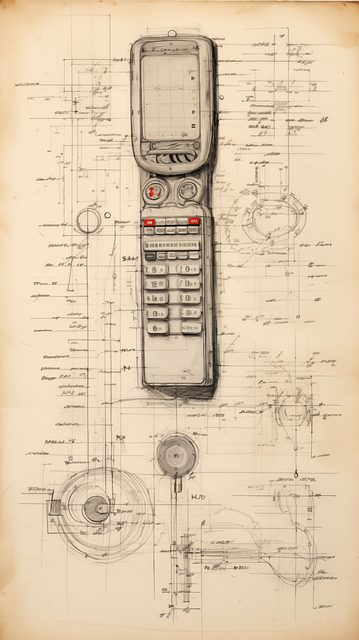In the stringent UK patent application process, precise translations are not merely desirable—they are mandatory for success. Professional translators with technical expertise ensure clarity and strength in applications to the UK Patent Office, averting rejection and legal issues. High-quality translation services must maintain accuracy and fluency, preserving document integrity and complying with UK law. Specialized expertise, native speaker proficiency, advanced tools, and rigorous quality assurance are crucial for effective communication of intricate patent concepts across jurisdictions. Integrating AI and ML, along with localization, is shaping the future of these services to meet globalized intellectual property needs. Innovative cost-effective solutions balance accuracy and affordability.
In the competitive global market, precise translations of UK patent applications are vital. This article explores the intricacies of ensuring accuracy in a complex field. We delve into the challenges, from cultural nuances to legal jargon, that can impact patent translation. Learn how choosing the right language services provider, leveraging native speakers, and advanced tools enhance precision. Discover best practices, common mistakes to avoid, and future trends shaping cost-effective solutions for successful UK patent translations and applications.
- Understanding the Importance of Accurate Translations for UK Patents
- The Challenges in Patent Translation: Cultural and Legal Nuances
- Choosing the Right Language Services Provider for Your Patent Documents
- Ensuring Quality: Quality Assurance Processes in Patent Translation
- The Role of Native Speakers in Maintaining Contextual Meaning
- Advanced Tools and Technologies for Enhanced Precision in Patent Translations
- Common Mistakes to Avoid During UK Patent Translation
- Case Studies: Success Stories in Accurate Patent Translation
- Future Trends in Patent Translation Services
- Cost-Effective Solutions Without Compromising Quality
Understanding the Importance of Accurate Translations for UK Patents

In the realm of intellectual property, especially with UK patent applications, accurate translations are not merely desirable—they are indispensable. The precision of a translation directly impacts the success of a patent application, ensuring its clarity and strength in the eyes of the UK Patent Office. A single grammatical error or misinterpretation could lead to rejection or, worse, legal complications later on.
Translation services for UK patents and patent applications must therefore adhere to the highest standards of accuracy and fluency. Professional translators with specialized knowledge in the technical jargon of various industries are crucial. They not only ensure that every term is translated correctly but also that the document’s original intent and significance are preserved, fostering a seamless transition from one language to another.
The Challenges in Patent Translation: Cultural and Legal Nuances

The world of patent translation is far from straightforward, especially when it comes to navigating the complexities of different legal systems and cultural contexts. When translating UK patents or patent applications, professional translators must overcome several challenges. Firstly, they need to possess a deep understanding of the technical terminology specific to each industry, ensuring precise communication of intricate concepts. This goes beyond simple word-for-word translation; it involves grasping the subtle nuances that convey meaning effectively in both languages.
Moreover, cultural and legal nuances present significant hurdles. Different countries have distinct patent laws and regulations, with the UK following its own set of rules and practices. Translators must be adept at interpreting not just words but also the underlying principles and intent, ensuring compliance with UK law while preserving the integrity of the original document. This delicate balance is crucial for maintaining the validity and protection offered by patents in their respective jurisdictions, making high-quality translation services for UK patent applications indispensable.
Choosing the Right Language Services Provider for Your Patent Documents

Choosing the right language services provider is a critical step in ensuring precise and accurate translations for your UK patent documents. With the intricate nature of patents, it’s essential to work with professionals who have a deep understanding of both technical jargon and intellectual property laws. Look for providers that offer specialist translation services tailored specifically for patent applications and documentation. This expertise will help convey your ideas and inventions clearly and precisely to international audiences.
When selecting a service provider, consider their experience in handling patent translations, the range of languages they support, and their commitment to quality control. It’s also beneficial to choose companies that employ native speakers to guarantee grammatical perfection and natural phrasing. Additionally, ensuring confidentiality is vital, especially when dealing with sensitive intellectual property. Reputable firms will have robust security measures in place to protect your documents.
Ensuring Quality: Quality Assurance Processes in Patent Translation

Ensuring quality in patent translations is paramount, especially for documents as critical as UK patents and patent applications. Professional translation services dedicated to this domain employ rigorous Quality Assurance (QA) processes. These typically involve multiple layers of review by expert linguists who specialize in both language and technical domains. Each translator is qualified to handle specific patent fields, ensuring accurate terminology and specialized knowledge are applied throughout the translation process.
Beyond individual translator proficiency, comprehensive QA also includes proofreading, formatting checks, and compatibility with original document structure. Advanced tools like machine translation memory and terminology databases further enhance consistency and accuracy. By implementing these robust quality assurance measures, translation services for UK patents and patent applications guarantee that the translated documents maintain the same level of technical precision, legal validity, and regulatory compliance as their source materials.
The Role of Native Speakers in Maintaining Contextual Meaning

The accuracy of a patent translation goes beyond mere word-for-word substitution. It requires a deep understanding of technical jargon, legal terminology, and cultural nuances specific to the domain. This is where native speakers play a pivotal role in ensuring the translated content maintains its contextual meaning. Native translators are intimately familiar with the subtle differences in language usage and idiomatic expressions across languages. They can accurately convey complex scientific or legal concepts, preserving the original intent and ensuring the patent’s integrity.
For UK patent applications, where precision is paramount, native-speaker translators are essential. They grasp the nuances of British English and can adapt terminology to align with industry standards and legal frameworks. This expertise guarantees that the translated documents are not only linguistically correct but also meaningful within the UK market context. Therefore, when seeking translation services for UK patents and patent applications, prioritizing native-speaker translators is crucial for achieving accurate and culturally relevant translations.
Advanced Tools and Technologies for Enhanced Precision in Patent Translations

In the realm of UK patent translations, advanced tools and technologies have revolutionized precision and efficiency. Professional translation services for patent applications leverage sophisticated software and machine learning algorithms to deliver highly accurate results. These innovations go beyond simple word-for-word interpretations, ensuring that technical jargon, complex terminology, and intricate concepts are conveyed with meticulous care.
By integrating artificial intelligence, these translation platforms can analyze entire patent documents, identifying context-specific terms and adapting language accordingly. This level of sophistication not only enhances accuracy but also streamlines the process, making it more accessible for inventors and legal professionals alike. Advanced tools enable dynamic translations that keep pace with evolving technological advancements, ensuring your UK patent documentation remains precise and cutting-edge.
Common Mistakes to Avoid During UK Patent Translation

When it comes to UK patent translations, accuracy is paramount. Common mistakes can lead to misinterpretations, delayed submissions, and even legal complications. One of the primary errors to avoid is literal translation, which often fails to capture the nuances of technical language. Each language has its own terminology and expressions; a professional translator should understand both the source and target languages to convey the exact meaning.
Another frequent blunder involves omitting or misrepresenting specialized terms. Patent applications are packed with complex concepts and inventions; translators must have in-depth knowledge of these fields to render them accurately. Moreover, context is crucial—a term’s meaning can shift depending on the surrounding text. Translation services for UK patents and patent applications should employ native speakers with expert knowledge to ensure precision and avoid these pitfalls.
Case Studies: Success Stories in Accurate Patent Translation

In the competitive global market, ensuring clarity and precision in patent documentation is paramount, especially within the intricate landscape of UK patent law. Translation services for UK patents and patent applications play a pivotal role in facilitating cross-border innovation. Success stories within this domain highlight the effectiveness of dedicated translation teams who grasp not just linguistic nuances but also technical jargon and legal terminology specific to intellectual property (IP) documentation.
Case studies demonstrate that accurate translations can lead to favorable outcomes, including successful patent grant processes and robust IP protection worldwide. These success stories often involve teams with expertise in both languages and engineering or scientific fields. Such specialists are adept at translating complex concepts while maintaining the original intent and innovation behind each invention, thereby ensuring that patentees receive reliable protection for their intellectual property assets across diverse markets.
Future Trends in Patent Translation Services

As technology evolves, so do the demands of patent translation services. Future trends in this field are set to be shaped by several key factors. Artificial Intelligence (AI) and Machine Learning (ML) are poised to play a pivotal role, offering enhanced precision and efficiency in processing UK patent applications. Advanced AI algorithms can now not only translate text but also understand complex technical terminology and nuances specific to various industries. This development promises faster turnaround times and more accurate results for translators working on patent documentation.
Additionally, there is a growing emphasis on localization, which goes beyond language translation. It involves adapting the content to fit cultural and regulatory contexts, ensuring that the translated patent application resonates with its target audience in the UK market. This trend demands a deeper level of expertise from translation service providers who must stay updated with the latest advancements in both language technology and industry-specific knowledge. With the increasing globalisation of intellectual property, translation services for UK patents and patent applications are set to become even more sophisticated and critical in facilitating international protection for inventors and businesses.
Cost-Effective Solutions Without Compromising Quality

Many businesses seeking patent protection in the UK often face a challenge: finding high-quality, cost-effective translation services for their patent applications. It’s essential to strike a balance between accuracy and affordability, especially when navigating complex legal documents. However, with the right provider, achieving both is entirely possible.
Professional translation companies now offer innovative solutions tailored to the unique needs of patent applicants. Advanced technologies, such as machine translation, enable efficient pre-translations, reducing human effort and associated costs. These initial translations are then reviewed by expert linguists who ensure precision, adding value with their industry knowledge. This two-step process delivers both speed and accuracy, making it an attractive option for those on a budget without sacrificing quality in UK patent translations.
In ensuring the success of your UK patent application, choosing accurate and reliable translation services is paramount. By understanding the nuances of cultural and legal contexts, leveraging advanced tools, and employing native speakers, you can achieve precision in your patent translations. Several case studies demonstrate the positive impact of meticulous translation on patent protection and approval rates. Looking ahead, future trends in patent translation services, including cost-effective solutions without compromising quality, offer even greater accessibility to innovative ideas from around the world.
